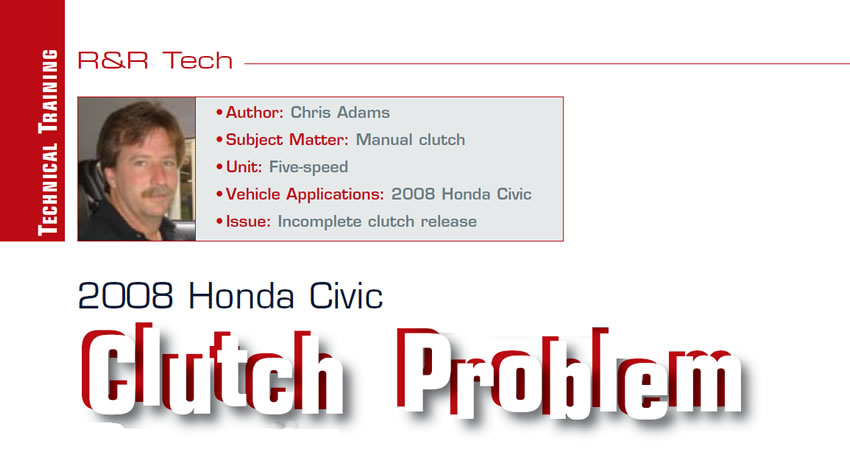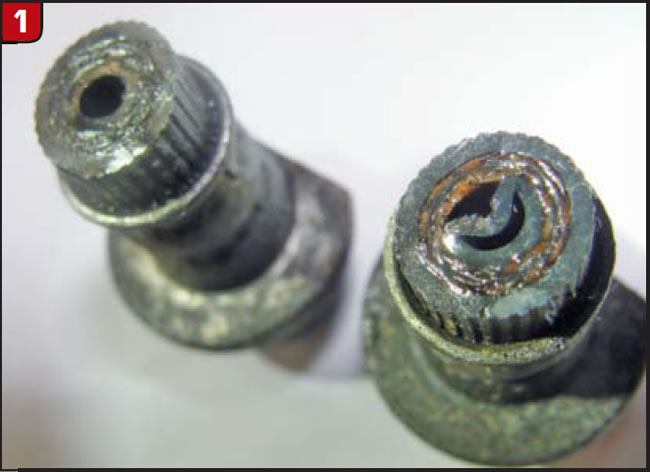
R&R Tech
- Author: Chris Adams
- Subject Matter: Manual clutch
- Unit: Five-speed
- Vehicle Application: 2008 Honda Civic
- Issue: Incomplete clutch release
Recently a 2008 Honda Civic equipped with a five-speed manual transmission came into our shop with an unusual complaint: The customer said the engine speed flared after he shifted fairly quickly. Our first thought was that maybe the clutch was getting weak and not holding well after an aggressive shift.
On the initial road test and under normal driving conditions, the car seemed to be working fine. However, when the car was driven a little more aggressively, the customer’s concern became apparent. If you released the clutch pedal quickly, the pressure plate seemed to react slowly. Upon further inspection, we noted that when the vehicle was stationary with the engine off and the clutch pedal was partially depressed, it would take some time for the pedal to rise back up to the pedal stop.
At this point we needed to narrow down the possible causes of the problem, so we unbolted the slave cylinder from the transmission case and manually stroked the clutch throw-out fork. No drag was felt in the system when this test was performed, so we determined that the problem was outside the transmission, and more than likely somewhere in the hydraulic system.

Neither the master cylinder nor the slave cylinder showed any signs of leakage, but the hydraulic fluid in the system looked strange to me; slightly cloudy, indicating that there was moisture or some contaminant in the system.
Since the owner had just bought the vehicle, we had no knowledge of its repair history. Because I was having concerns about what might have contaminated the hydraulic system, I recommended that we replace both the master and slave cylinders and flush the system with new fluid. Unfortunately, after we completed those repairs, the customer’s concern was still present.
Searching for additional clues, I noted that this car uses a flexible clutch hydraulic line, identical to a brake hose. I have been in the transmission business exclusively since I got out of trade school, but I still remembered learning then that rubber brake lines sometimes would have issues creating a checkvalve effect inside the hose. With this in mind, I removed the hose from the car and tried to blow through it. It seemed restricted, but without being able to see inside the hose I needed to cut it open to confirm the restriction.
It’s clearly evident in the photo that the inner lining of the hose was swollen and partially collapsed, likely because of the fluid contamination. Although this condition did not seem to affect the operation when pressure was applied to the slave cylinder, fluid could not flow back to the master-cylinder reservoir as intended to release the clutch.
This is basically the first time I have seen this condition on a hydraulic hose for the clutch system, though it is very common on brake systems. Because both systems operate under the same principles and use the same types of fluid, I am certain we will see more of them.
For future clutch maintenance, it would be a good idea to replace these flexible hoses whenever the master and/or slave cylinder needs to be serviced. It would certainly prevent an unwanted comeback and ensure that your customer has peace of mind when leaving your shop.

Chris Adams is the lead diagnostician for Certified Transmission in the Omaha, Neb., area. He has been with the company for more than 25 years.













